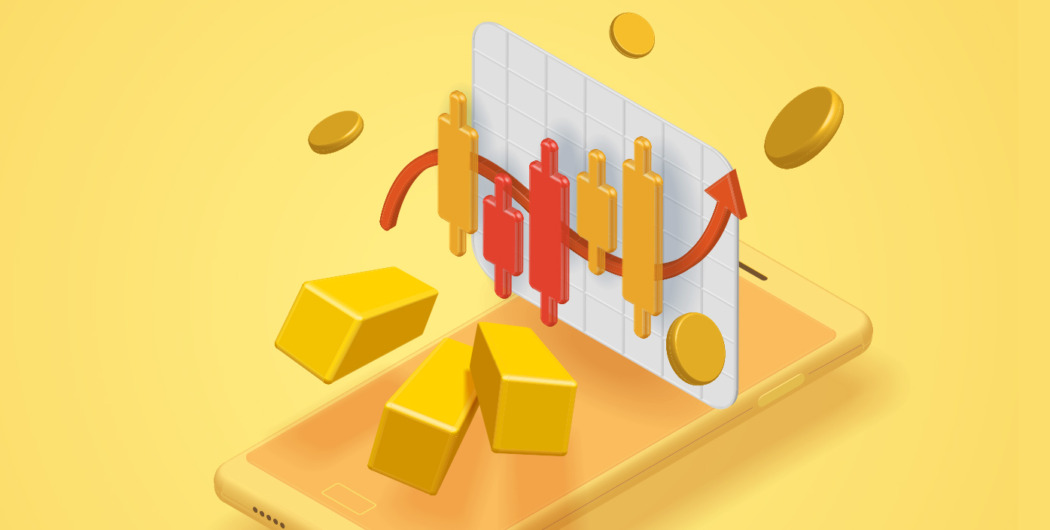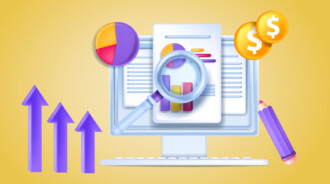

With the constantly rising number of stock trading apps and robot-advisor options, selecting the platform that would help best achieve your investment goals can be quite challenging. However, the evolving competition in trading apps in recent years and the innovation accompanying it is amazing news for investors.
So, which app is the best for share trading on the market in India?
To help you make your choice, our experts extensively researched and evaluated all the major U.S.-based offerings available today to put together a list of the best stock trading apps available in India and assorted them into different categories. So let’s dive right into it!
Best share trading apps
We checked out a review of several share market trading apps in India and highlighted the best ones:
- Interactive Brokers — Best App for Active Traders.
- TD Ameritrade — Best App for Beginners.
- Wealthfront — Best Automated Investing App.
- Tastyworks — Best App for Options Traders.
- TD Ameritrade — Best Self-Directed Trading App.
Interactive Brokers — Best App for Active Traders
Quick Facts:
- Account Minimum: $0.
- Fees: 1% of trade value with a cap of $0.005 per share for the Pro platform, $0 for IBKR Lite.
Experienced traders will feel an immediate familiarity with the mobile app, as IBKR successfully carries over all the core features and functionalities from the desktop Traders Workstation (TWS), which is one of the most comprehensive and best online apps for trading today. Its users are also given access to unparalleled strategy, analysis, research tools, and all available asset classes, including direct coin trading of cryptocurrencies.
Experienced traders who have previously used TWS generally find the overall mobile experience to flow smoothly for them. The mobile app and the desktop version are well synchronized, with watchlists created on the mobile app also visible on its desktop counterpart.
Pros:
- The mobile experience successfully mirrors the core functionality of the desktop version.
- The stock screeners and options strategies on the app match the web version.
- The charts in the app are intuitive and detailed and contain useful trading indicators.
- Amazing processing of order execution.
- Attractive, low-margin interest rates.
Cons:
- The mobile app has no fixed income screener.
- Getting familiar with the extensive capabilities of the platform has a learning curve.
Even though the IBKR app carries over and maintains nearly all the features of the desktop version, some reasonable constraints are still seen due to the extensive depth and breadth of the TWS platform. An example is that the desktop option offers a lot more options for trading strategies and analysis.
TD Ameritrade — Best App for Beginners
Quick Facts:
- Account Minimum: $0.
- Fees: Free stock, ETF, and per-leg options trading commissions. $0.65 per options contract.
TD Ameritrade is the best trading app for beginners in India because its clear educational focus empowers beginner investors to understand the share market and their investments better.
That said, TD Ameritrade’s education material in the app isn’t as feature-rich as their website. The app’s educational content has been slimmed down to focus primarily on investing on the go instead of learning about investing in general. However, even this watered-down educational experience is significantly more comprehensive than anything offered by the competition.
Investors can begin their trading journey with TD Ameritrade without needing to commit to the platform by enrolling for and trading with a demo account. This helpful feature gives them a chance to understand market behaviors without risking their capital.
Pros:
- The mobile app is made with beginners in mind.
- Investors can boost their knowledge by taking advantage of wide-ranging educational tools.
- A great blend of different investment options for a variety of users.
- Extensive learning resources covering the basics and the complexities of investing.
Cons:
- Fractional share trading is not available.
- Very low interest on uninvested cash.
Overall you are sure to find the mobile experience is comprehensive without overpowering, letting you choose features to match your goals. This gentler introduction to investing makes TD Ameritrade the top trading app for beginner investors.

Wealthfront — Best Automated Investing App
Quick Facts:
- Account Minimum: $500.
- Fees: A 0.25% charge for most accounts with no fees for withdrawals, transfer charges, or minimums and no trading commission.
With an elegant, sleek design, Wealthfront provides users access to a powerful, digital-only investment experience through their full-scale money management features. You’re bound to find the goal setting, financial guidance, account aggregation, investing, and banking options user-friendly and smooth to navigate.
Wealthfront’s Self-Driving Money tool provides an exemplary automation experience. It gives you complete control of your investment portfolio. This automation allows you to passively optimize your investment strategy for your goals whenever needed, even while you are asleep.
The Android and iOS mobile apps are outstanding and on par with the desktop version in terms of functionality, features, and ease of navigation. The trading app is thoughtfully designed, paying attention to every small detail of the user’s experience.
For example, steps have been taken to minimize data entry errors by reducing unnecessary data typing, opting to use drop-down menus, user-friendly sliders, and auto-fill functionality.
Users will still have to enter their user IDs and passwords to link external accounts, but overall the workflows are quite consistent and intuitive.
Pros:
- Full-scale financial planning tools.
- Path’s digital-only financial guidance is the best one available.
- A thoughtfully detailed mobile experience designed to minimize errors and provide smooth functionality.
- Self-Driving money provides users with smooth financial management through their smartphones.
Cons:
- Syncing to external accounts syncing can be inconsistent at times.
- No discounts are provided for larger balances.
- No human financial guides are available to help users.
So, Wealthfront topped the chart of the best Overall Robo-advisor investment apps as its platform provides a well-finished, intelligent user experience with access to a much greater range of useful money management tools.
Tastyworks — Best App for Options Traders
Quick Facts:
- Account Minimum: $0.
- Fees: No charge for stock trades, $1 charge to open options trades (capped at $10 per leg), and no charge to close.
The Tastyworks platform is specially designed for options trading, focusing on seamless design, education, and intuitive tools. By relentlessly focusing on nothing but options trading, Tastyworks has managed to reach the top spot in our list of best apps for trading options in India.
The app’s workflow is developed with hassle-free order management of options in mind. We can definitely agree that they have done a great job designing an effective and quick trading experience. The mobile app also packs features, such as quote streaming capabilities, asset classes, and order types, that help it mirror the desktop version.
Even though Tastyworks’ option workflow is optimized perfectly and helps it stand out in its category, some users may be troubled by the lack of some notable features, such as a lack of research, news, and drawing tools. The mobile platform’s biggest drawback is that graphs on mobile devices cannot be rotated horizontally.
Pros:
- The mobile user experience is optimized for full options trading.
- Multi-leg options trades can easily be edited.
- A superb blend of tools and pricing in comparison to the competition.
- Complete offering of asset classes apart from options
Cons:
- Mobile devices cannot be used to open an account with them.
- Order notifications and price alerts aren’t available.
- The mobile app is not a suitable desktop replacement for heavy options traders.
- The app doesn’t facilitate smooth trading of anything other than options.
Tastyworks is a great broker for trading options. Some traders might find Tastyworks’ mobile app stripped down compared to other apps. However, it still conveniently gets the job done for options traders away from their desks. By being singularly focused on options trading, the Tastyworks app stands out from other brokerage mobile apps that have to compromise on options features for more frequently used asset classes.
TD Ameritrade — Best Self-Directed Trading App
TD Ameritrade edges out the competition for our Self-Directed Trading App category. The app is neatly organized, with trading features packed into easy-to-use menus and functionalities. The simple design also manages to incorporate watchlists, options, orders, managing positions, and chart customization.
While you use the TD Ameritrade app, the workflow is narrowed down and focuses on the tools you need to sell, buy, and monitor your overall portfolio. This allows active traders to rest assured that they are not missing out on any important market share data on their app. Users might still prefer the desktop version whenever possible, even though the apps provide a powerful and dynamic alternative.
Regardless of which app you choose to go for, you’ll find that the mobile experience of TD Ameritrade has all the accessories needed by investors to comfortably manage your money on the go, making it the best app for stock market trading in India.
Pros:
- Expertly designed mobile apps that are more efficient to use than their desktop counterparts.
- Users can choose between two apps based on their preferences.
- Updates, charts, and customizations are smoothly synchronized between mobile and desktop platforms.
- Provides extensive trading functionality and investment selections.
Cons:
- Fractional share trading is not offered by TD Ameritrade.
- Hybrid users may be challenged as a few tools are only available on a single platform.
Comparison of which app is best for the share market
| Company | Fees | Account Minimum | Mobile App |
| Interactive Brokers | 1% of trade value with a cap of $0.005 per share for the Pro platform, $0 for IBKR Lite | $0 | Android, iOS |
| Wealthfront | A 0.25% charge for most accounts with no fees for withdrawals, transfer charges, or minimums, and no trading commission | $500 | Android, iOS |
| TD Ameritrade | Free ETF, stock, and per-leg options trading commissions, $0.65 charge per options contract | $0 | Android, iOS |
| Tastyworks | No charge for stock trades, $1 charge to open options trades (capped at $10 per leg), no charge to close | $0 | Android, iOS |
The evolution of investing apps
The desktop version of brokers’ trading platforms has traditionally carried more features and capabilities than its mobile counterpart. However, a growing population of potential investors looking for ways to manage (and grow) their wealth via devices such as tablets or smartphones has made it inevitable for the investment industry to evolve. Share trading and Robo-advisor platforms thus took steps to ensure an accelerated transition, now focusing mainly on developing the digital customer experience.
In recent years, the experiences and features between mobile and desktop versions of trading platforms have become virtually interchangeable. The synchronized experience means that basic investors can manage their money and monitor their investment goals from wherever they are without worrying about missing out on anything.
That said, plenty of experienced investors would not be completely comfortable using even the best app for trading market shares. Physical limitations, such as the size of a mobile screen, will get on the nerves of chart enthusiasts. However, for the average investor, the choice between using a mobile or desktop version is now simply a matter of preference. For investors looking to trade intermittently throughout the year or hold their stocks, apps are the best way to do so without missing any significant functionality.
Desktop vs. Mobile Experiences
Thanks to the introduction of many app-only retail investors, brokers can no longer focus solely on their platform’s desktop experience. Brokerages that prioritize their mobile experience and those only accessible to investors through apps already exist. Established brokers thus have to work on their mobile and desktop platforms simultaneously to keep up with the competition of being the best stock market trading app.
For this purpose, many brokerages have now begun to focus on providing an increasingly consistent experience across multiple devices with each update to their platform. From a consumer’s point of view, this means you will generally find similar tools and workflows regardless of what platform you are on.
Today, improved technology means that the devices running these trading apps have also improved significantly. It has decreased the feature reduction previously seen in these apps. More and more brokers can now align and synchronize essential features across the desktop and mobile versions. Features such as analysis, charting, research, and screening tools are now prevalent in investment apps. Also, multi-leg options trades previously thought to be forever restricted to desktops have made their way to apps.
However, many heavier tools found on desktop trading platforms have still not made their way to the apps, or if they have, they have been seriously watered down. Professional traders, in particular, will always prefer higher features and customizations that can only be done well on a desktop platform.
Advantages of using an investing app to trade stocks
Accessibility is the key advantage of using an app to trade on the stock market. App developers have leveraged the rapid advancements in mobile technology to make investing and trading stocks simpler than ever. Most people (probably you, too) carry their mobile devices on them almost constantly. So, no matter when and where you want to, you can conveniently monitor your investments and use an app to react to stock market developments in India, even in places where it simply wasn’t practical to do so before.
The easy availability of mobile trading apps has also made the stock market more accessible to people of all backgrounds, experiences, and interest levels. Users no longer need a professional trading terminal with countless monitors.
The competition in the industry, because of the increasing number of brokers, has brought about innovation in the form of all kinds of new platforms and apps that can be used to trade stock. Now even someone looking to trade stocks as a part-time gig can trade on the go with access to the same real-time market data as a full-time Wall Street trader, resulting in much lower barriers to entry (such as education and costs).
Disadvantages of using an investing app to trade stocks
Even though investment apps have moved closer to a 100% feature parity with their desktop counterparts, some functionality gaps still exist. It can impact certain kinds of investors. You can typically expect there to be some differences between mobile and desktop trade experiences when it comes to charts and analysis tools.
Some investing platforms also limit the trading of some asset types or market exchanges to the desktop version, entirely omitting them from their mobile app.
Another obvious disadvantage to app-based stock trading is the inherent size limitation on mobile devices compared to computer monitors.
In addition, overtrading and the gamification of finance are also a disadvantage of trading applications. With constant access to their portfolios, traders (especially those freshly entering the market) can waste too much time and power monitoring and fret over even the tiny changes in the market.
It also doesn’t help that users are subjected to countless distracting notifications and alerts from the app about recent share trends or a minute change in stock value.
Advice for someone who is considering using a stock trading app
App-based trading gives everyone unhindered access to financial markets worldwide right at their fingertips, no matter where they are located. However, your actions will decide your gains or losses even with such convenience and power. Therefore, you must consider defining your goals, preferences, and investment strategy before investing and trading via a mobile app.
This awareness, along with your lessons from past experiences and knowledge, will help match you to the best trading platform. Do also keep in mind to evaluate the broker overall rather than just focusing on their mobile app. Check out and understand the online trading version of the app, the fees, the presence of hidden charges, etc. A beautiful, easy-to-use app might not compensate for the broker’s high commissions and poor execution.
While researching the best stock market trading apps in India, you might find some platforms providing demo accounts to try their platform and its features without risking your actual capital. Use it! Testing out several app-based investment offerings can give you more practical insight and will make you aware of the number of excellent features provided by different brokers.
Difference between finance and investing apps?
You might have noticed that this review has focused solely on investing apps without a mention of finance apps. Investing apps like Wealthfront, TD Ameritrade, etc., allow you to purchase and sell assets. Practically speaking, they are the apps made by brokerage firms to provide you with an account with them that you can then use to execute trades.
But there is a much larger family of finance apps. Some brokerages offer selected finance app functions within their investment apps. An example of this is syncing of an external account coupled with a financial analysis of your total holdings. There is a sharp line that differentiates between the two. A finance app cannot be used to trade assets and stocks, even though you might be able to connect your brokerage accounts to the app.
On the other hand, investment apps allow you to check positions, research investments, and (most importantly) execute trades without needing to leave the app. Finance apps go no further than showing and including your brokerage account’s balance as part of your financial portfolio. An example of a relatively common financial app is a budgeting app, something we do not include in our investment app reviews but rather review separately.
Conclusion
Above, we have covered the best apps available in India for trading stocks, options, and much more. Hopefully, whether you’re an expert or a beginner, our guide should have helped you find the investment apps that best suit your needs!








